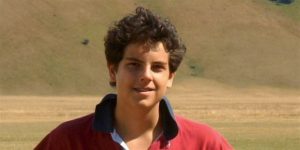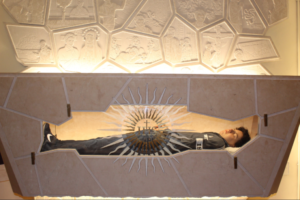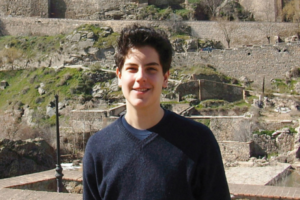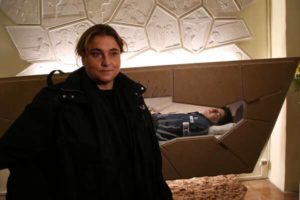Today’s young people have gained an intercessor in heaven with whom they can pretty much relate because he was just like one of them. Blessed Carlo Acutis, the first millennial to be beatified, is on his way to becoming the first millennial saint.

Already dubbed as the “Patron saint of the internet,” the Italian Carlo Acutis is the first blessed to have a social media account, which he used in the service of the Gospel. Another saint who holds the same title is St. Isidore of Seville, who lived in Spain around 600 AD. The bishop gathered all known information during his time for posterity.
Carlo, who died in 2006 at the age of 15, was beatified last October 10 in a Mass celebrated in Assisi, Italy. The miracle attributed to his intercession was the healing of a Brazilian boy who used to suffer from annular pancreas, a serious birth defect that impairs the flow of food to the intestines. Carlo’s cause for canonization began in 2013, after he became a “Servant of God,” the first step in the canonization process. He was declared a “Venerable” in 2018.
Carlo’s tomb was open for public veneration from October 1 to 19, 2020 in Assisi, Italy. His remains were dressed in jeans, sweater, and sneakers as evidence of his life as a millennial teen.

Religion, faith, and Carlo
Carlo Acutis was born on May 3, 1991 in London. Soon after, his family moved back to Milan, where he spent most of his life. At the young age of three and a half, he started to ask his parents to bring him to churches in the city so he could “say hello to Jesus,” and he would often pick flowers at parks so he could offer them to the Madonna.
Carlo’s parents, Andrea Acutis and Antonia Salzano, were not religious. In fact, Antonia said in an interview that she has been to church, in total, only three times before Carlo was born: for her First Communion, her confirmation, and her wedding. She mentioned that Carlo might have been influenced by Beata, Carlo’s Polish nanny, a devotee of St. John Paul II. She said that Beata may have introduced him to religion, but “there was in him a natural predisposition for the sacred.” He asked so many questions about Catholicism that Antonia was pushed to study theology and was motivated to return to the faith. She says that Carlo saved her, and she hopes to end up in purgatory, at least.
From an early age, Carlo showed an exceptional love for the Eucharist. At his request, he received his First Holy Communion when he was seven, instead of the customary age of 9-10. Since then, he made sure to pray the rosary and attend Mass daily.
Path to holiness
Carlo was a computer whiz. At nine, he was already an amateur self-taught computer programmer, coder, and web designer, who helped several Catholic organizations run their websites.
At the age of 11, he began investigating and visiting Eucharistic miracles all over the world. He asked his parents to take him to pilgrimages so he could document and later on display these miracles. In 2005, at the age of 14, he created the website Miracoli Eucaristici (Eucharistic Miracles) where he exhibited all the Eucharistic miracles he had compiled. He dreamed of spreading the Gospel using his computer and the Internet.
Like any teenager, Carlo loved to eat and to play football and videogames. He too had many struggles, but unlike most of his peers, he understood the importance of self-control. He loved to play video games but limited himself to one hour a week; he enjoyed food but imposed temperance. At one point, he was given a diary and decided to “track his progress” and figure out how to improve himself. He used to say, “What’s the use of winning a thousand battles if you cannot win against your own passions?”

He loved making people laugh. His classmates and teachers would often laugh at his remarks, but when he realised that it could upset others, he made a conscious effort to change. He wanted to make life pleasant for everyone around him.
During visits to the beach, he would put on his mask and “hunt for litter” as a game. He would take the dogs for walks and pick up trash he came across.
At home, he would set the alarm clock a few minutes early to make his bed and tidy up his room, so that the cleaning staff would not have to do it for him. Little things he did to make his corner of the world a little better.
Rajesh Mohur, a household worker at the Acutis’, was impressed that someone like Carlo lived such a simple life. Aside from volunteering at a soup kitchen in Milano, Carlo, accompanied by Rajesh, would bring food and hot drinks for the homeless in the evening, for whom he also bought sleeping bags using his own savings. Captivated by Carlo’s deep faith, charity, and purity, Rajesh decided to convert from Hinduism to Catholicism.
“Testamento”
In October of 2006, Carlo fell ill. At first, it seemed like the common flu. After a couple of days, his condition worsened, and he blurted, “I offer the sufferings that I will have to undergo for the Pope, the Church, and to go straight to heaven without going through purgatory.” However, his parents did not put too much thought into it.
As advised by his pediatrician, Carlo was admitted at Clinica De Marchi, where he was diagnosed with acute myeloid leukemia (AML or M3). He was then transferred to a hospital in Monza. As soon as he got there, he shook his head and said, “I’m not getting out of here alive.” Antonia would later on share that on October 11, 2006 at 2:00 pm, Carlo fell into a comma, with a smile on his lips that they thought he just fell asleep. By 5:00 pm, he was brain dead and the next morning declared legally deceased.
Antonia recounts in an interview how her son had predicted his own death. “Days after the funeral, I was awakened by a voice, ‘Testamento’ (the Italian word for ‘will’ and ‘testament’). I started to search his room. Nothing. I turned on the computer, his favorite instrument. And there it was, a short video he recorded by himself three months prior in Assisi. In the video, Carlo said, ‘When I weigh 70 kilos, I will be destined to die,’ looking peacefully at the sky.”

The Acutis family owns a house in Umbria, the region of which Assisi is a part. One day, they saw a sign about new niches being sold in the municipal cemetery and when asked what he thought of it, Carlo answered, “I would be very happy to end up here.”
While it was initially reported that his body was discovered to be intact, it was later clarified, by a spokesperson for Acutis’ beatification who was present during the exhumation, that his body was fully integral, having all its organs, but not incorrupt. Carlo’s mother recalled how they would have wanted to donate his organs but were told it was not possible because his organs were compromised on account of his disease.
Today, the heart of Blessed Carlo Acutis is considered a relic, displayed in a reliquary at the Basilica of St. Francis in Assisi. The Church assigned October 12, the same day of his death, as his feast day.#
References:
Corriere della Sera website
Catholic News Agency website
Vatican News website
Banner photo from zumapress.com.
Leave a Reply